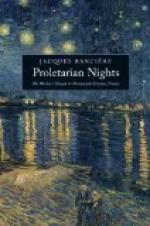Some modern Egyptian engineers seem first to have conceived the project of a Suez canal; but the man who accomplished it was the engineer and statesman, M. de Lesseps. In spite of all manner of discouragements, he brought the canal to completion, supported throughout by the influence and authority of the khedive. The first thing to be done was to supply the laborers and the new town of Ismailia with drinking water, by means of a narrow freshwater canal from the Nile. Till then all fresh water had been brought in tanks from Cairo. Next, a town—called Port Said, after the khedive who had first favored the plan of the canal—was built on the Mediterranean. The canal was to run a straight southerly course to Suez. At Ismailia, the new city, it would connect with the railroad to Cairo; between Port Said and Ismailia it would pass through two swampy lakes.
In seven years Port Said became a town of ten thousand inhabitants. The total length of the canal is about ninety miles, but more than half of it passes through the lakes, which had to be dredged. The width of the canal is a little over one hundred yards, its depth twenty-six feet. About sixty millions of dollars were expended on its construction and the preliminary works that it entailed,—these last all tending to the benefit and prosperity of Egypt.
The grand opening took place Nov. 16, 1869. The sultan was not present; he had been persuaded out of his fancy to see the sight, and the khedive was left in peace as master of ceremonies. The Emperor Francis Joseph of Austria was there in his yacht, and the Empress Eugenie, the “bright particular star” of the occasion, was on board the French war-steamer “L’Aigle.” As “L’Aigle” steamed slowly into the crowded port, all the bands played,—
“Partant pour la Syrie,
Le brave et jeune Dunois,”
the air of which had been composed by Queen Hortense, the mother of the emperor, so that it was dignified during his reign into a national air.
That afternoon there was a religious ceremony, which all the crowned heads and other great personages were expected to attend. Two of the sovereigns or heirs-apparent present were Roman Catholics, one was a Protestant, and one a Mohammedan. The Crescent and the Cross for the first time overshadowed worshippers joining in one common prayer. The empress appeared, leaning on the arm of the Emperor of Austria. She wore a short pale gray silk, with deep white Brussels lace arranged in paniers and flounces. Her hat and veil were black, and round her throat was a black velvet ribbon. The Mohammedan pontiff who officiated on the occasion was understood to be a man of extraordinary sanctity, brought from a great distance to lend solemnity to the occasion. He was followed by the chaplain of the empress, a stout, handsome Hungarian prelate named M. Bauer.[1]
[Footnote 1: Blackwood’s Magazine.]




